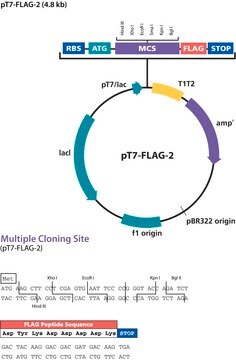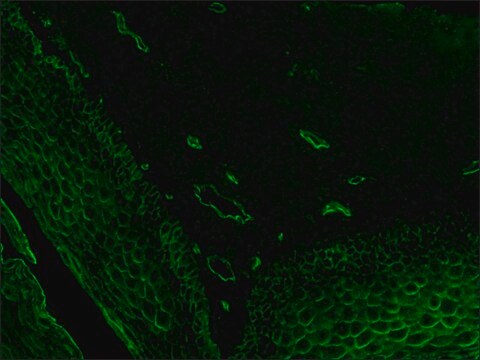OGS93
PSF-CMV-NH2-HA-EKT-NCOI - N-TERMINAL FLU HA TAG PLASMID
plasmid vector for molecular cloning
Sinônimo(s):
cloning vector, expression vector, molecular cloning vector, plasmid, plasmid vector, snapfast vector, vector
About This Item
Produtos recomendados
etiqueta
Hemagglutinin A (HA) tagged
forma
buffered aqueous solution
peso molecular
size 4265 bp
seleção de bactérias
kanamycin
Origem de replicação
pUC (500 copies)
clivagem do peptídeo
no cleavage
localização da etiqueta do peptídeo
N-terminal
Promotor
Promoter name: CMV
Promoter activity: constitutive
Promoter type: mammalian
gene repórter
none
Condições de expedição
ambient
temperatura de armazenamento
−20°C
Descrição geral
Promoter Expression Level: This plasmid contains the mammalian CMV promoter to drive gene expression. We have tested all of our mammalian promoters in a range of cell types and CMV is consistently the strongest in those we have studied. However there are many reports of the CMV promoter demonstrating silencing by methylation in long-term culture.
Aplicação
There is a start codon in the NcoI site can be removed by digestion with KpnI if required. The MCS for gene insertions extends from NotI to XbaI however the tag resides between the NotI and HindIII sites. There are Shine-Dalgarno sequences and KOZAK sequences aligned with the start codon of the peptide tag.
The ClaI to NheI sites have other functions such as adding C-terminal peptide tags second promoters or IRES expression components. The BsgI and BseRI restriction sites cleave within the stop codon in the XbaI site and allow the retrospective fusion of C-terminal peptide tags sequences if the stop codon is placed in this position.
Sequência
Nota de análise
produto relacionado
Código de classe de armazenamento
12 - Non Combustible Liquids
Ponto de fulgor (°F)
Not applicable
Ponto de fulgor (°C)
Not applicable
Certificados de análise (COA)
Busque Certificados de análise (COA) digitando o Número do Lote do produto. Os números de lote e remessa podem ser encontrados no rótulo de um produto após a palavra “Lot” ou “Batch”.
Já possui este produto?
Encontre a documentação dos produtos que você adquiriu recentemente na biblioteca de documentos.
Nossa equipe de cientistas tem experiência em todas as áreas de pesquisa, incluindo Life Sciences, ciência de materiais, síntese química, cromatografia, química analítica e muitas outras.
Entre em contato com a assistência técnica








